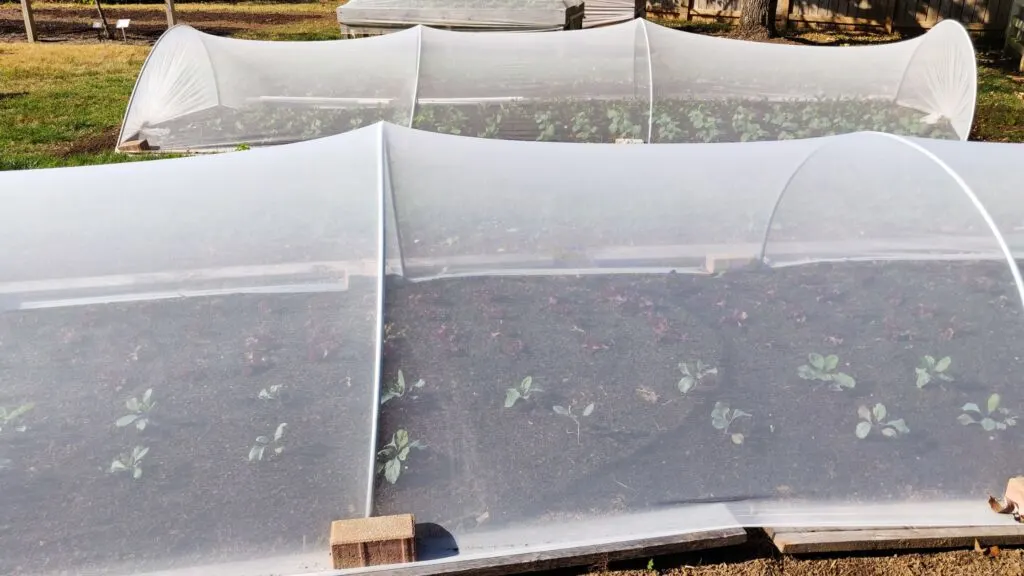If you’re like me, keeping a vegetable garden alive during the winter seems impossible. Cold nights and unpredictable temperature changes often make it seem as though our hard work over the summer is all for nothing.
I used to spend these colder months feeling a little bit helpless, resigned to watching my prized vegetables succumb to Mother Nature’s cruel wintery whimsy – until I found out some secrets of how to keep your vegetable garden going even when temperatures drop below freezing!
If you’ve been struggling with keeping your harvest alive despite freezing temperatures or have just started wondering how on Earth people manage it, stick around – this blog post has everything you need to know about weathering cold snaps in style!
So, grab a mug of hot cocoa, put on your winter gardening gloves, and let’s get started!

Choose the Right Vegetables
One of the most important things to consider when planning your winter garden is the type of vegetables you want to grow. Some plants can’t handle the cold, so it’s best to choose cold-tolerant vegetables. Kale, spinach, and Brussels sprouts are excellent choices for winter gardening.
You can also try planting carrots, beets, or turnips, as they can tolerate the cold weather. Make sure to choose a suitable variety that will grow well in your area.

Use Greenhouses and Cold Frames
If you live in a colder climate, investing in a greenhouse or a cold frame might be worth considering. These structures can provide a warmer microclimate for your plants, allowing them to thrive in cold weather. You can even build your own using some basic materials.
Remember to ensure the greenhouse or cold frame is well-ventilated to prevent overheating during the day. Check Facebook marketplace and other used sites for greenhouses available.

Protect Your Plants with Row Covers
Row covers are an inexpensive and easy way to protect your plants from frost and cold winds. These covers are made of a lightweight and breathable fabric that allows sunlight, air, and water to pass through while protecting against harsh weather conditions.
You can also use cloths or blankets to cover your plants, but make sure to remove them during the day to allow sunlight to reach them.

Consider Using Raised Beds
Raised beds are perfect for winter gardening because they provide better drainage and retain heat and moisture. They are also easier to protect with row covers and other winter gardening accessories.
Plus, they allow you to start planting earlier and extend your growing season well into the winter months.
Keep an Eye on Your Soil Moisture
Winter gardening often means dealing with dry soil due to the lack of rain and snow, depending on where you live. It’s essential to keep your soil moist by watering it regularly.
However, ensure not to overwater as this can cause root rot and other issues. You can also add mulch to help retain moisture and regulate soil temperature. Consider using a freeze-proof hose to water your garden in cooler temperatures.
Gardening can be a tricky endeavor in the winter, but it certainly doesn’t have to stop you from having a productive vegetable garden. Everyone has different climates and plant preferences, so what works for one person may not work for another.
That’s why planning ahead is essential when building a winter garden. Choose vegetables suitable for your climate and location, and utilize the tricks we’ve discussed throughout this article to ensure success best!
Now that you know how easy it is to get through the winter garden blues and ensure your plants stay alive during those long months of cold weather and shorter days, let’s get started! Get out there with your plant gloves on, and go get growing.
Don’t forget to check out our other tips and tricks for novice gardeners like yourself. Happy gardening!
